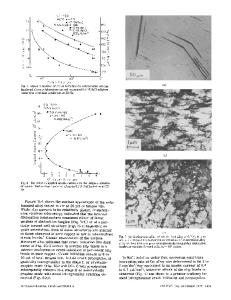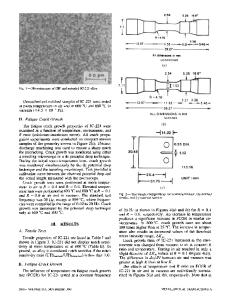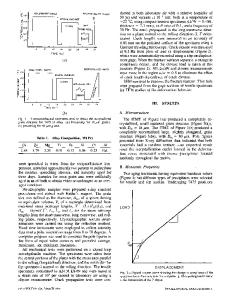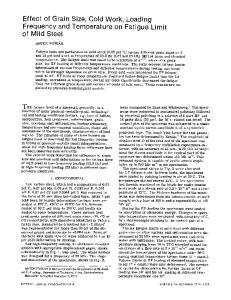Effect of Frequency, Environment, and Temperature on Fatigue Behavior of E319 Cast-Aluminum Alloy: Small-Crack Propagati
- PDF / 767,646 Bytes
- 15 Pages / 593.972 x 792 pts Page_size
- 15 Downloads / 351 Views
N
CAST-ALUMINUM alloys have been extensively used in the production of fatigue- critical automotive components, including engine blocks and cylinder heads, which experience more than 108 alternating stress cycles during the expected service life, and the very highcycle fatigue properties are therefore of great interest. Performing fatigue tests in the very high-cycle regime becomes practical with the use of ultrasonic-testing instrumentation, which operates at approximately 20 kHz. Ultrasonic-fatigue techniques can also be used for rapid generation of fatigue-crack growth data and offers the possibility to study very low fatigue-crack growth rates far below the conventional threshold (10-10 m/cycle). However, in actual components of castaluminum alloys, the critical locations are subjected to a loading frequency of 20 to 100 Hz, which is two to ten decades lower than the ultrasonic-fatigue testing frequency. Therefore, it is necessary to know if the fatigue properties are significantly influenced by the substantial increase in the cycling frequency. Fatigue-damage evolution can be divided into crack initiation and crack propagation. It has been widely concluded that, for cast-aluminum alloys, fatigue cracks initiate predominantly from pores located at or close to the specimen surface, and the number of cycles required to initiate a crack is insignificant relative to the total fatigue life. Therefore, the fatigue life is dominated by X. ZHU, Postdoctoral Research Fellow, and J.W. JONES, Professor, are with the Department of Materials Science and Engineering, University of Michigan, Ann Arbor, MI 48109. Contact email: [email protected] J.E. ALLISON, Senior Technical Leader, is with the Research & Advanced Engineering, Ford Motor Company, Dearborn, MI 48124. Manuscript submitted on September 10, 2007. Article published online August 21, 2008 2666—VOLUME 39A, NOVEMBER 2008
crack propagation in cast-aluminum alloys[1–4] and determining the effect of frequency on fatigue-crack propagation is important in understanding the effect of frequency on the S-N behavior. The effect of frequency on fatigue-crack propagation in aluminum alloys may arise from intrinsic effects, i.e., strain-rate effect, and time-dependent, or extrinsic, effects, such as those attributable to environmentally assisted crack growth or fatigue/creep interaction. It is unlikely that strain rate exerts a significant influence on fatigue-crack propagation in aluminum alloys because plastic deformation of face centered cubic metals has been reported to be relatively insensitive to strain rates.[5–7] Holper et al.[8,9] investigated the effect of frequency on fatigue-crack growth of aluminum alloys at 20 kHz and 20 Hz in vacuum and found no frequency influence on near threshold fatigue-crack growth in aluminum alloys. Also, cyclic loading near the fatigue limit or fatigue-crack growth near the threshold stress intensity involves only minimal cyclic plastic deformation, thus strain-rate effects should be significantly moderated or absent.[8,9] When the effect of strain rate is sm
Data Loading...











